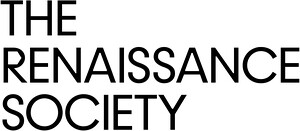February 11–April 9, 2017
Cobb Hall, 4th Floor
5811 S. Ellis Ave
Chicago, Illinois 60637
USA
The Renaissance Society presents an exhibition by Robert Grosvenor, the centerpiece of which is an untitled sculpture from 1989–90, re-contextualized within a spare architectural installation.
Over this 50-year career, Robert Grosvenor has produced a body of work that is at once solidly physical and conceptual, muscular and fluid. Grosvenor frequently uses industrial materials and found objects as he experiments with texture and scale, resulting in sculptures that reveal a handmade quality and subtle vein of humor. The works resist interpretation, instead quietly and strangely asserting themselves both as assemblages of relationships and as discrete, holistic entities. Critical reception and written accounts of his work over decades reflect an artist who has enamored his audience specifically for his ability to elude them.
For this sculpture, at once monumental and human-scale, Grosvenor adapts the materials of infrastructure—concrete blocks, steel, Plexiglas and paint—evoking what critic John Yau has suggested is the labor of an “anonymous worker.” It is simple to perceive this work. But to really see it, that requires time and patience. Its meaning is always emergent, at play with the viewers’ memories and their psychic relationships to the materials and objects at hand. Its careful, exacting occupation of the exhibition space sets this stage for exploring, both in mind and in body. 27 years after its initial realization, how has our sense of this sculpture, from its formal language to its frank materiality, evolved or expanded?
Following the exhibition, the Renaissance Society will publish a new monograph featuring contributions by Yve-Alain Bois, Bruce Hainley, Susan Howe, John Yau, and others. Grosvenor began exhibiting in the 1960s and his work was prominently included in important exhibitions such as Primary Structures (Jewish Museum, 1966) and Minimal Art (Gemeentemuseum Den Haag, 1968), which helped define minimalism. In this career Grosvenor has followed his own distinct path, however, creating works that express his singular sensibility. The presentation at the Renaissance Society provides an opportunity to generate new scholarship around Grosvenor’s oeuvre, further strengthening recognition of his significant contributions to sculpture in the 20th, and now 21st, centuries.
Curated by Solveig Øvstebø.
Robert Grosvenor (1937) was born in New York City and studied at the Ecole des Beaux-Arts and the Ecole Supérieure des Arts Décoratifs in France and the Universitá di Perugia in Italy. Important one-person exhibitions of Grosvenor’s work have been presented at the Kunsthalle Bern (1992) and the Fundação de Serralves, Porto (2005), and he participated in the 2010 Whitney Biennial. Grosvenor’s work is included in the collections of the Aldrich Museum of Contemporary Art, Walker Art Center, Minneapolis, Storm King Art Center, New York, the Museum of Modern Art, New York, the Hirshhorn Museum and Sculpture Garden, Washington, D.C., the Whitney Museum of American Art, New York, and the Serralves Museum, Porto.
Related events
All events are free and open to the public; no booking is required.
Opening reception with talk by John Yau
Saturday, February 11, 5–8pm, talk at 6pm
Kent Hall, Room 120, 1020 E. 58th St., Chicago, IL 60637
Critic and poet John Yau discusses the work of Robert Grosvenor on the occasion of the exhibition opening and reception.
Exhibition walk-through with Solveig Øvstebø
Wednesday, March 1, 6pm
The Renaissance Society, 5811 S. Ellis Ave., 4th floor, Chicago, IL 60637
Exhibition curator Solveig Øvstebø offers attendees her perspective on Robert Grosvenor’s sculpture and practice.
Discussion: Meaning and Material
Thursday, March 9, 6pm
Kent Hall, Room 120, 1020 E. 58th St., Chicago, IL 60637
This program presents artists Geof Oppenheimer (Chicago) and Virginia Overton (New York) in dialogue. Each will respond to Grosvenor’s work, exploring potential resonances with their own practices.
The Renaissance Society at the University of Chicago is committed to supporting ambitious artistic experimentation, primarily through the commissioning of new works, and to fostering rigorous, interdisciplinary discourse. In addition to the exhibition program, this independent, non-collecting museum hosts lectures, concerts, performances, screenings, and readings, and regularly publishes catalogues and artist books. All of the Renaissance Society’s exhibitions and events are free and open to the public.



